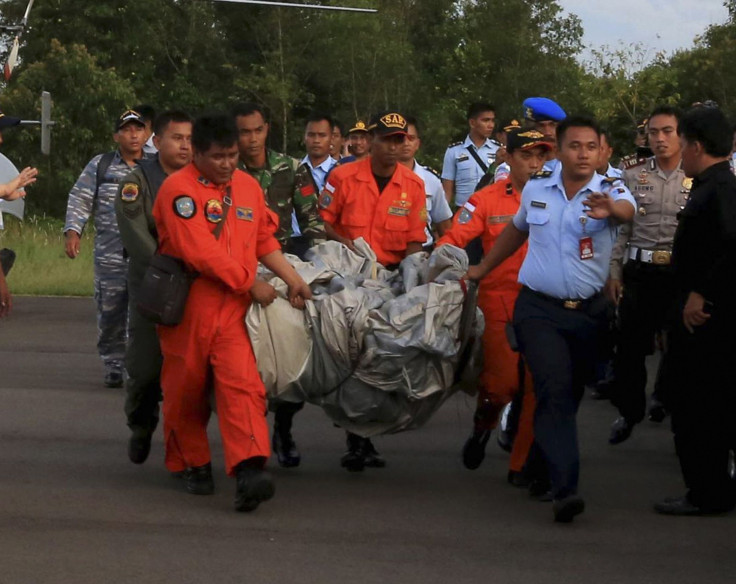AirAsia Flight 8501 And 2014's Other Aviation Tragedies

In a year that saw multiple aircraft lost over Asian waters and lands, the most recent being Indonesia AirAsia Flight 8501 on Sunday, many casual observers and even newshounds likely believe that 2014 was a particularly bad year for air travel. But the surprising truth is that the Bureau of Aircraft Accidents Archives (BAAA) reports that this year in fact saw just 112 plane crashes as of Tuesday, the lowest number since the first commercial jet took to the skies in 1949.
That translates to a record low 2.1 crashes per 1 million flights, a reassuring statistic for many who suffer from aviophobia, or fear of flying.
”Remarkably, 2014 has the lowest number for passenger flight accidents in modern aviation history,” Harro Ranter, the founder and director of the Aviation Safety Network, told Reuters.
But that rosy side of the year’s aviation record only represents part of the story. If Flight 8501’s 162 passengers and crew members are included as fatalities in the final tally, 1,326 people died worldwide in plane crashes this year as of Tuesday. That’s the highest toll since 2005, when 1,463 people died in plane accidents, according to the BAAA. And it’s markedly higher than the 459 deaths by plane crash in 2013, the lowest number of annual air travel deaths in modern aviation history, according to the BAAA.
"Every 10 years or so, we have a year that is less safe than others. Unfortunately, this year was one of those," Ronan Hubert, an aircraft accident historian at the BAAA, told CNN.
Despite these conflicting statistics about air travel safety in 2014, the year will go down as a landmark one because of a number of high-profile aircraft catastrophes that killed many people and dominated headlines.
Here’s a breakdown of the most consequential and most-discussed commercial air crashes of 2014, organized by date:
Malaysia Airlines Flight 370: What is probably the most prominent air catastrophe of 2014 came on March 8, when Flight 370 between Kuala Lumpur and Beijing went missing with 239 passengers and crew members on board. Transfixing people around the world who were stunned to learn that a Boeing 777 jetliner can go missing in this era of GPS, radar, satellites and other advanced technologies, the disappearance was only the first in what turned out to be a succession of tragedies for carriers in Southeast Asia. The plane and debris associated it with it have never been found despite a massive search effort, and the people it carried have been listed as casualties of the global air transport system.
Malaysia Airlines Flight 17: Malaysia Airlines’ year of tragedy continued July 17 with the downing of another of the carrier’s Boeing 777s, this time en route from Amsterdam to Kuala Lumpur. The circumstances surrounding the demise of the 298 people aboard Flight 17, which broke apart in the air over Eastern Ukraine, were much more sinister. It was shot down by a Russian-made anti-aircraft missile, Ukrainian and American officials told the New York Times. The incident raised tensions between Russia, Ukraine and the rest of the world, and debris was spread across a large swath of Ukrainian land. The plane was flying about 1,000 feet above airspace restricted by Ukrainian authorities due to fighting on the ground and the downing of two Ukrainian air force planes in the region in the days leading up to Flight 17’s destruction.
TransAsia Airways Flight 222: Just six days after Flight 17 was downed, another Asian carrier, TransAsia Airways, saw an ATR-72 commercial flight carrying 58 people crash during a domestic flight within Taiwan. The plane smashed into a residential area near Magong Airport during poor visibility and heavy rains associated with Typhoon Matmo, killing 48 of the people on board and destroying the aircraft. The accident contributed to building concerns about the safety of air travel in Asia.
Air Algérie Flight 5017: A day after Flight 222 crashed, an MD-80 aircraft operated by Swiftair and carrying 116 passengers and crew members, went down as it was en route from Algeria and Burkina Faso. The accident is the worst in Algerian history and resulted in the deaths of all on board. The assumed cause of the crash was loss of control of the plane by its crew.
Sepahan Airlines Flight 5915: The last in a series of summertime air travel catastrophes was the crash of Flight 5915, an Antonov 140 turboprop aircraft carrying 48 passengers and crew. The domestic Iranian flight from Tehran to Tabas went down as it was in its takeoff phase from Mehrabad Airport, killing 39 occupants upon crashing to the ground.
Indonesia AirAsia Flight 8501: The crash Sunday of this Airbus A320 jetliner between Singapore and Surabaya, Indonesia, still has much of the world’s population wondering what happened. Flight 8501’s 162 occupants are presumed dead two days after it disappeared while flying over the Java Sea, prompting a major search effort to find the plane or at least evidence that it had gone down. That proof came Tuesday in the form of debris found in the sea, which was confirmed by the Indonesian government to be the remnants of Flight 8501. The exact circumstances of the crash have yet to be determined, but the plane went down shortly after its pilot requested to climb to avoid clouds. The fallout of this tragedy will continue well into the new year, as will most of the accidents on this list.
© Copyright IBTimes 2024. All rights reserved.











